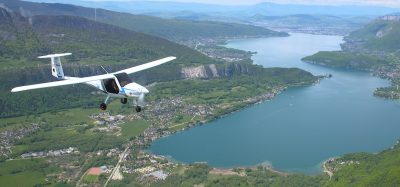Defending the world’s busiest airports against climate change
- Like
- Digg
- Del
- Tumblr
- VKontakte
- Buffer
- Love This
- Odnoklassniki
- Meneame
- Blogger
- Amazon
- Yahoo Mail
- Gmail
- AOL
- Newsvine
- HackerNews
- Evernote
- MySpace
- Mail.ru
- Viadeo
- Line
- Comments
- Yummly
- SMS
- Viber
- Telegram
- Subscribe
- Skype
- Facebook Messenger
- Kakao
- LiveJournal
- Yammer
- Edgar
- Fintel
- Mix
- Instapaper
- Copy Link
Posted: 24 April 2018 | Peter Vorage | Airport Engineer | NACO | No comments yet
In this article, Peter Vorage, engineer with Dutch airport consultancy and engineering firm NACO, writes about the devastating impact climate change could have on airports and the economies they sustain.


A CROSS-SECTOR PROBLEM: Whilst aviation may often be seen as a key contributor to climate change, airports are also one of its victims
The world’s busiest airports are often located near major city and close to a coast or a river delta. Around 350 million people live less than five metres above sea level, which makes them and the airports incredibly vulnerable to the effects of climate change, and particularly flooding.
NACO is part of Royal HaskoningDHV, an independent engineering consultancy with a long track record in water management. Amsterdam Schiphol Airport, and with it a quarter of the Dutch population, is located below sea level. That is why our experts are closely involved and have a lot of experience in water management all over the world. NACO is well placed to assist airport operators prepare for a resilient future.
Impact of airport closure
Examples of climate change’s effects on airports are hurricanes such as Katrina and Sandy in the USA which effectively shut down airport operations. Another example was in 2011, when extreme rainfall caused flooding at Don Muang airport in Bangkok. It took a year before the damage was repaired and all airport operations could resume
Besides the economic and operational impact, this also has a reputational impact on the whole country. When the international airport is inaccessible, so is the area it services. A storm of only a few hours could take down an airport for weeks, months or even longer. Sadly, not a lot of airports take the needed steps against the effects of climate change.
The average airport nowadays is built on legacy infrastructure with gradual expansion cycles. At the time these airports were build, they didn’t expect the increase in extreme rainfall that we do now. This means that the drainage systems cannot handle the amount of rain in the future. So the threat of extreme weather events poses a very real concern. The situation is made more acute when the airport is located in a heavily urbanised area or flood plain.
Each world region has its own challenges. In South East Asia people are used to heavy rainfall. Here, the projected change in a weather event can create extreme amounts of water very quickly: 195mm of rain an hour which, over the surface of a typical international airport, is the same water volume as 870 Olympic swimming pools that has to be taken care of.
Avoiding disaster
Thankfully some do take action to plan ahead and increase their resilience against the threats of climate change. In recent years, NACO has been working with, among others, Amsterdam Airport Schiphol and the Civil Aviation Authority of Singapore. They identified in detail how climate change could impact assets and operations by carrying out scenario based risk assessments and mapping potential threats.
As a result of this close teamwork, we have identified three layers that need consideration:
- Flood prevention: creating large-scale water defences. Here, we seek to protect the entire airport perimeter, via levees, tidal gates, detention ponds and pumping stations to manage large volumes of floodwater.
- Minimising flooding effects: identifying the most essential assets to airport operations and ensuring they’re protected. This could mean moving IT servers to first floor locations, ensuring back-up generators are located above flood level and erecting flood barriers around essential structures. Vulnerable areas identified during the risk assessment feed into the airport master plan to avoid unnecessary exposure for new projects.
- Crisis Management: to ensure there are robust and well-established processes in place to cope with unexpected weather event.
Our experts create detailed assessments and studies of the potential impact of climate change on airport infrastructure. With this, they assist airports in mapping potential vulnerabilities and proposing widely supported solutions before risks materialise, protecting critical assets and ensuring operational continuity now and in the future.


















